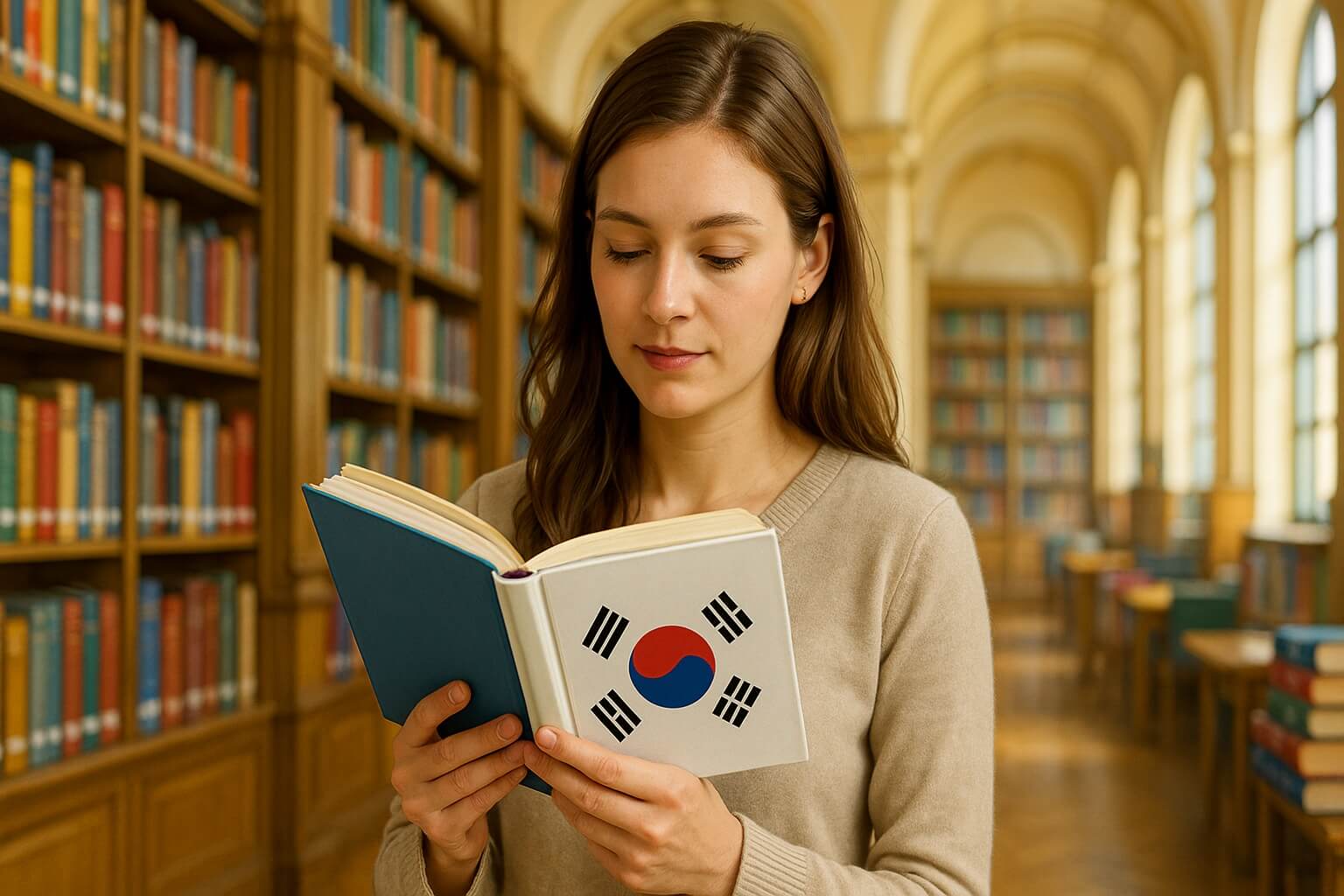
Korean sentence structure can initially feel like solving a puzzle—especially if you’re coming from English. The word order is different, particles appear frequently, and verbs consistently appear at the end. However, there’s logic behind it all. Once you grasp the basic patterns, Korean becomes much easier and even enjoyable. Here’s your comprehensive guide to understanding Korean sentence structures, from basics to advanced usage.
1. The Basic Structure: Subject–Object–Verb (SOV)
Korean sentences typically follow this structure:
Subject + Object + Verb
Example:
나는 사과를 먹어요.
na-neun sagwa-reul meogeoyo
“I eat an apple.”
- 나는 (I) = Subject
- 사과를 (apple) = Object
- 먹어요 (eat) = Verb
The verb always goes at the end of the sentence.
2. Understanding Particles
Particles define the grammatical role of words in Korean sentences. These small syllables attach directly to nouns:
- 은/는 = topic marker
- 이/가 = subject marker
- 을/를 = object marker
- 에/에서 = time/place markers
Example:
그 여자가 도서관에서 책을 읽어요.
“That woman reads a book at the library.”
- 그 여자가 (that woman) – subject
- 도서관에서 (at the library) – place
- 책을 (book) – object
- 읽어요 (reads) – verb
Particles allow flexible sentence structures by clearly marking word roles.
3. Omitting the Subject or Object
In Korean, the subject or object can be omitted if understood through context.
Example:
먹었어요.
“I ate (it).”
Explicit mention of “I” or “food” is unnecessary if contextually clear.
4. Asking Questions
Questions use the same sentence structure. Just change your intonation or add the question particle 까.
Example:
밥 먹었어요?
“Did you eat?”
The sentence structure remains the same; only intonation or a question particle is added.
5. Forming Negative Sentences
Negation is straightforward. Insert 안 before the verb or use the form -지 않다.
- 안 가요 = I don’t go.
- 가지 않아요 = I don’t go. (formal/literary)
6. Building Complex Sentences
You can connect clauses using endings such as -고 (and), -지만 (but), -니까 (because), etc.
Example:
저는 피곤하지만 숙제를 해요.
“I’m tired, but I do my homework.”
You can also form relative clauses:
제가 어제 본 영화는 재미있었어요.
“The movie I watched yesterday was fun.”
Here, 제가 어제 본 (I watched yesterday) modifies 영화 (movie).
7. Honorifics and Levels of Formality
Korean verbs change endings depending on the listener’s social position or familiarity:
- Informal: 먹어
- Polite: 먹어요
- Formal: 먹습니다
All convey “eat,” but each reflects different levels of politeness and respect.
Final Thoughts
While Korean sentence order differs from English, it’s consistent and logical. Master the subject–object–verb order, become familiar with particles, and practice verb endings. Soon, constructing Korean sentences will feel natural.
Understanding sentence structure deeply helps you think directly in Korean, rather than translating from English. That’s when true fluency begins.



